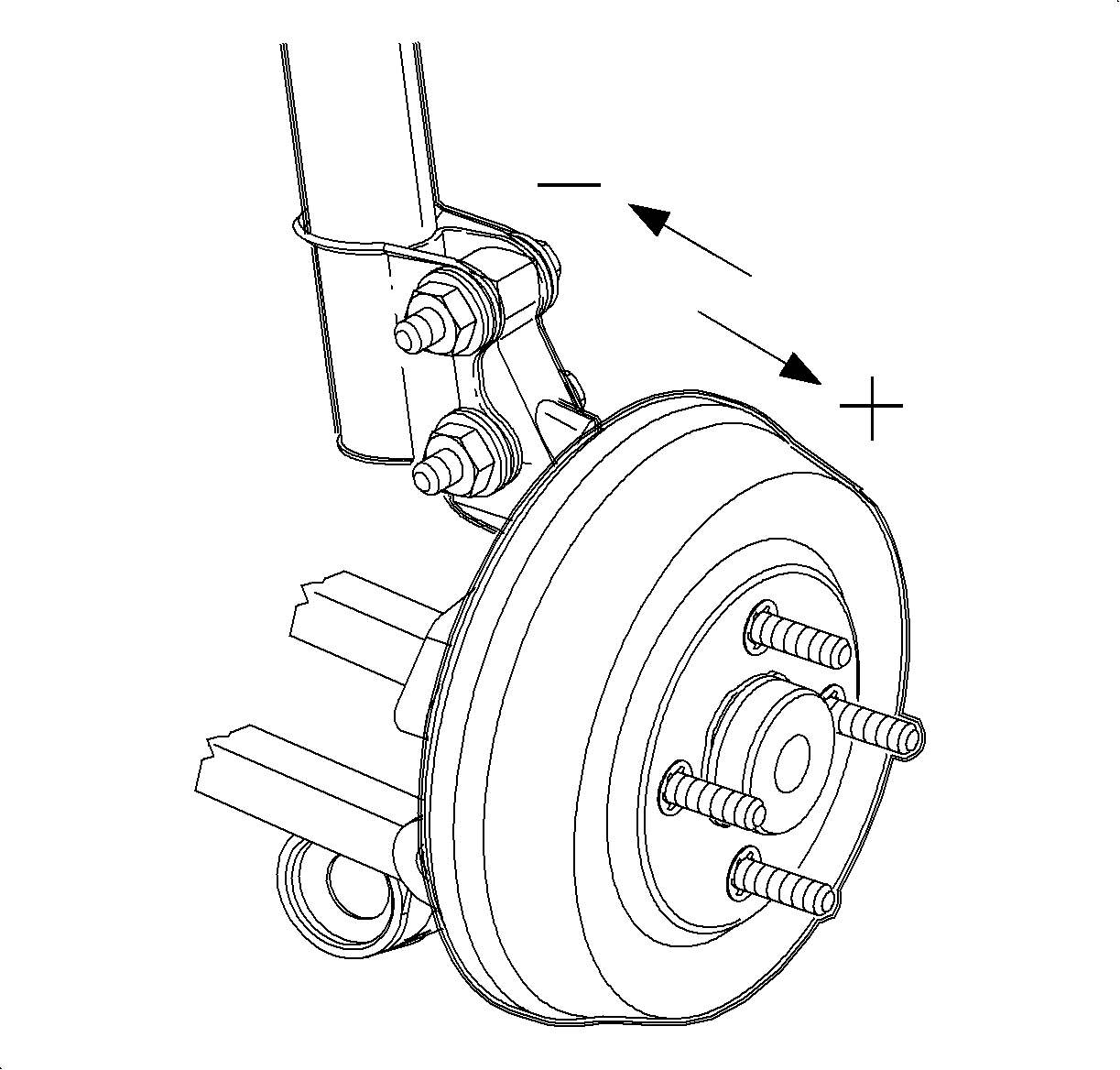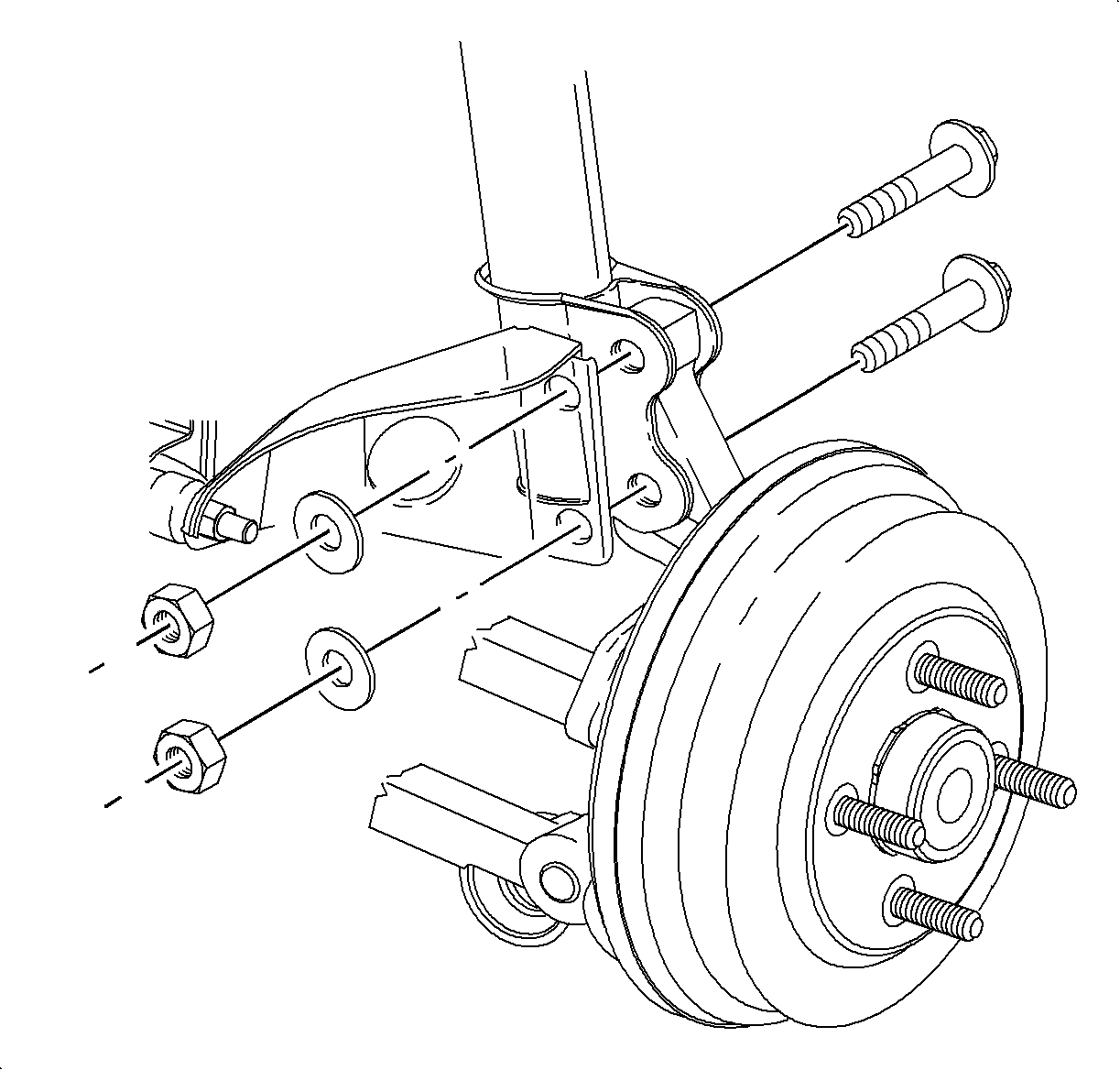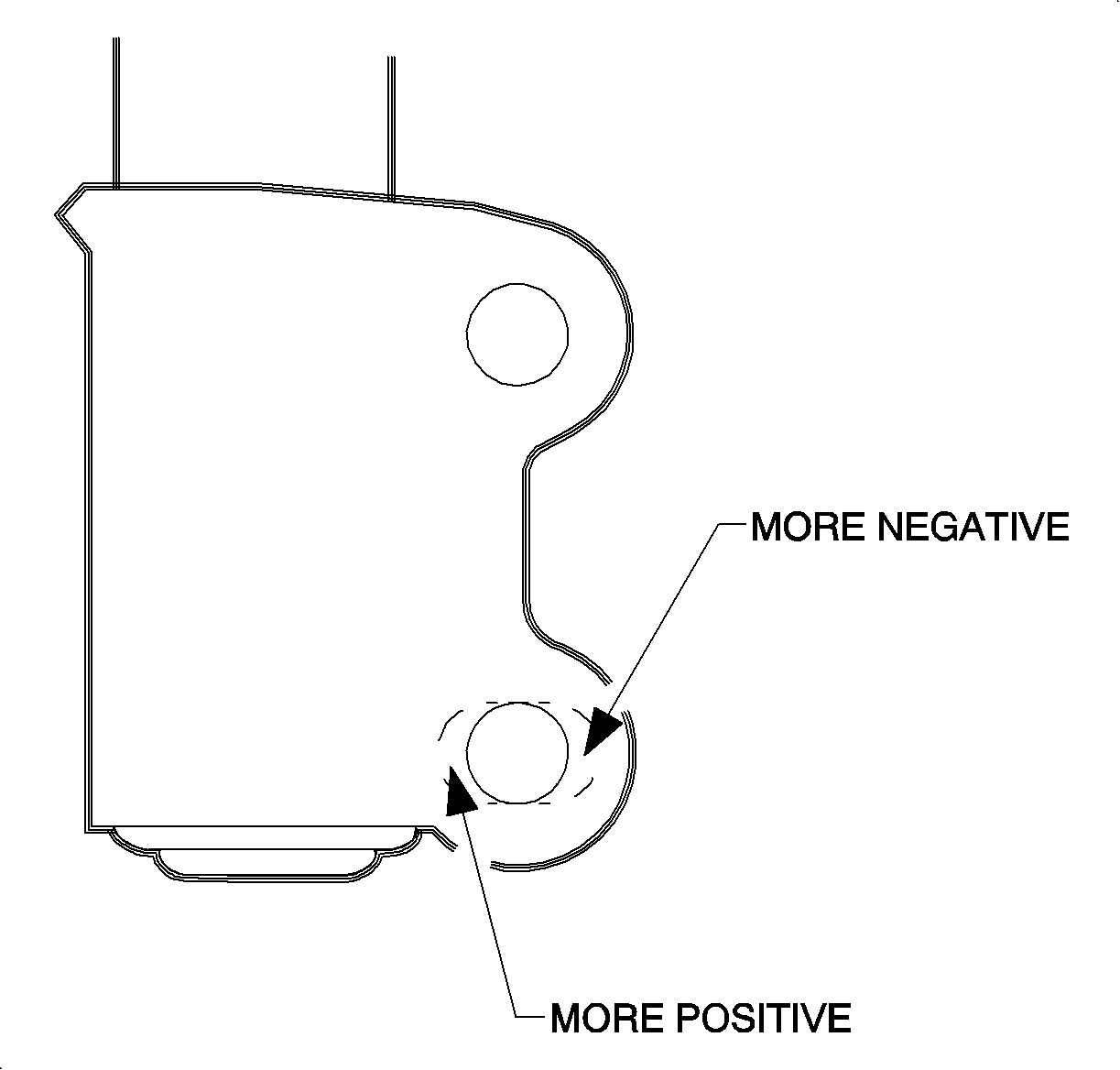Rear Wheel Alignment

Important: Rear wheel alignment angles must be set correctly before front wheel alignment is attempted.
Rear wheel alignment involves setting 2 alignment angles, camber and toe. Rear wheel caster is not adjustable.
Rear Wheel Camber
- Loosen the 2 strut to knuckle fasteners and pull or push on the knuckle in the direction of the desired camber change. This will allow up to 1.5 degrees of camber adjustment.
- If more than 1.5 degrees of camber adjustment is required and no bent components are observed:
- Tighten the strut-to-knuckle fasteners.
- Position the wheel onto the hub.
- Install the wheel nuts and tighten the wheel nuts in a crisscross pattern. Repeat the tightening pattern to ensure the torque is correct.
- Lower the vehicle from the hoist.
- Inspect the camber angle and adjust if necessary.

Important: If more than 1.5 degrees of camber adjustment is required, inspect for bent suspension components or body structure.
| Caution: Ensure that the vehicle is properly supported and squarely positioned. To help avoid personal injury when a vehicle is on a hoist, provide additional support for the vehicle on the opposite end from which the components are being removed. |
| 2.1. | Raise the vehicle on the hoist. |
| 2.2. | Remove the road wheel corresponding to the wheel being aligned. |
| 2.3. | Remove the 2 strut-to-knuckle fasteners and separate the knuckle from the strut bracket. |

| 2.4. | The strut mounting bracket consists of 2 layers of metal, an inner layer and an outer layer. The inner layer has a round 14.4-14.8 mm (0.57-0.58 in) hole through it at the mounting locations, while the outer layer has a 18.4-18.8 mm (0.72-0.74 in) slot through it. |
Using a round file or grinder, remove material from the inner layer of the strut bracket lower hole. The round hole may be increased to the size and shape of the slot in the outer layer. Do this on both sides of the strut bracket.
To increase negative camber, remove material from the outside of the lower strut hole.
To decrease negative camber, remove material from the inside of the lower strut hole.
| Important: If the strut was filed or ground, paint the exposed metal with primer. |
| 2.5. | Position the knuckle back into the strut with fasteners. |
Notice: Refer to Fastener Notice in the Preface section.
Tighten
Tighten the rear strut-to-steering knuckle fasteners to 170 N·m
(126 lb ft).
Notice: Before installing wheels, remove rust or corrosion from wheel mounting surfaces and brake rotors/drums. Failure to do so can cause wheel nuts to loosen in service.
Tighten
Tighten the wheel nuts to 140 N·m (103 lb ft).
